The cherry plum is a close relative of the cultivated plum and blackthorn. Its white flowers make it one of the most beautiful spring flowers. Together with the blackthorn, the plant is also considered the “original mother” of the garden plum.
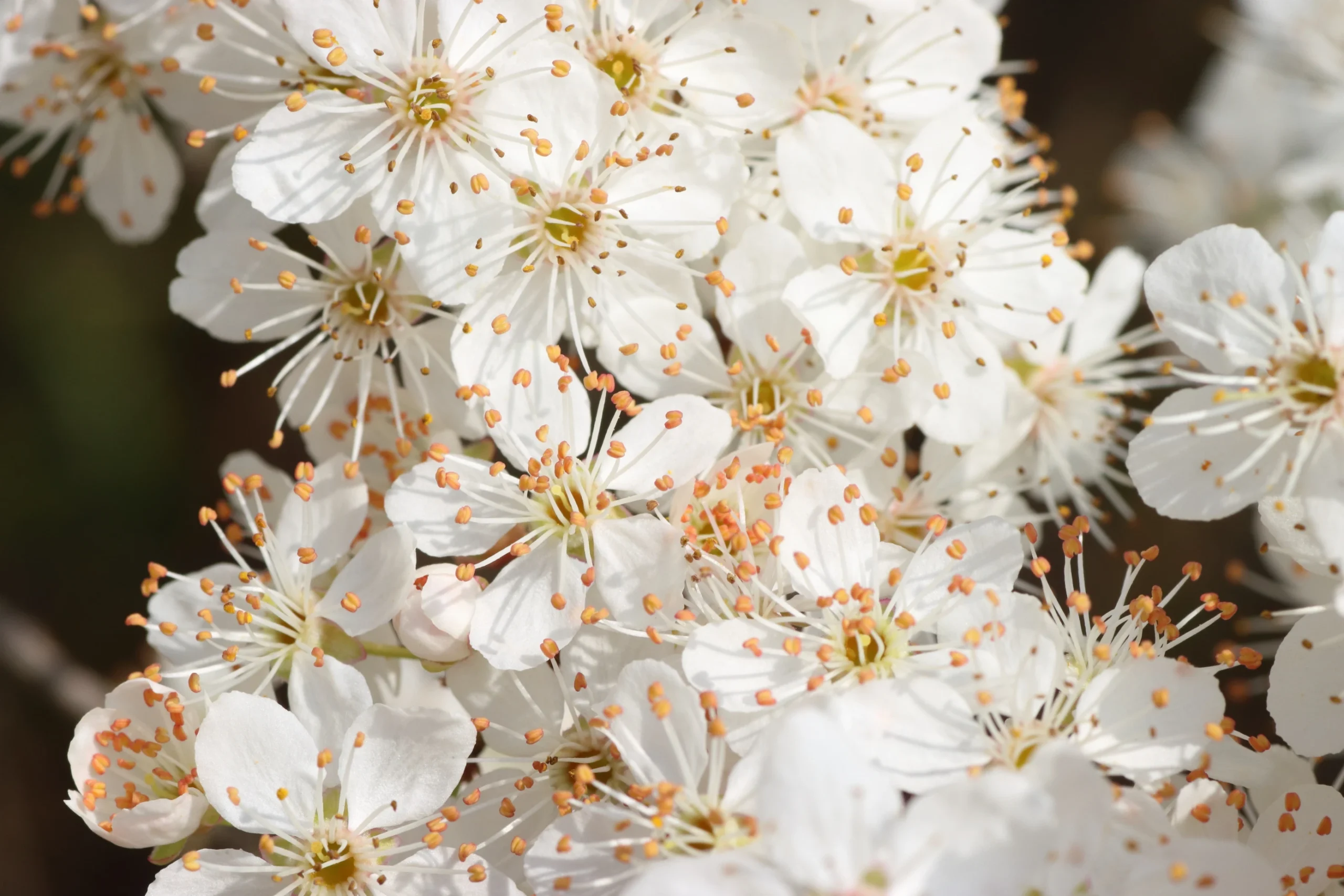
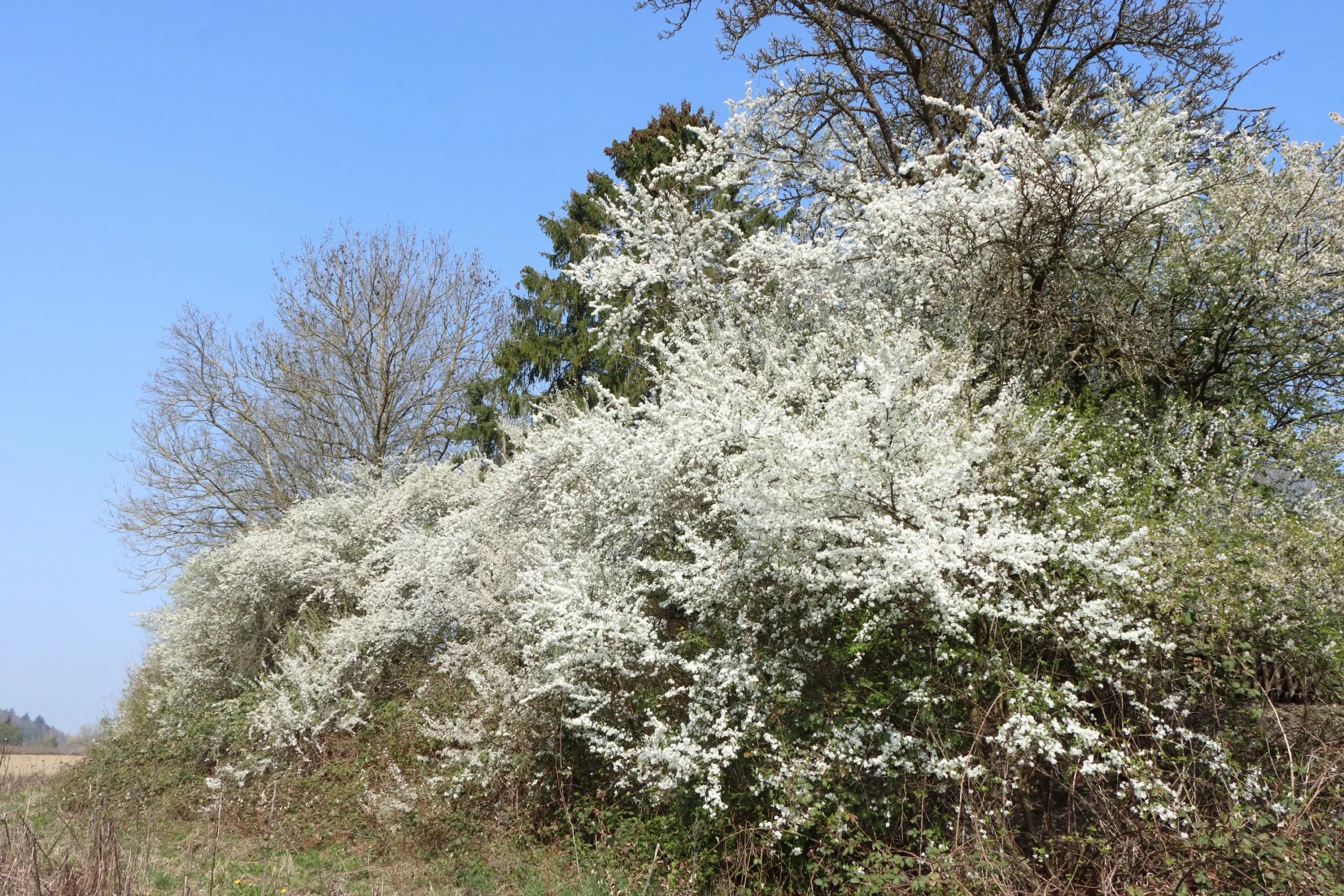
~ A hedge of cherry plum with other several shrubs ~
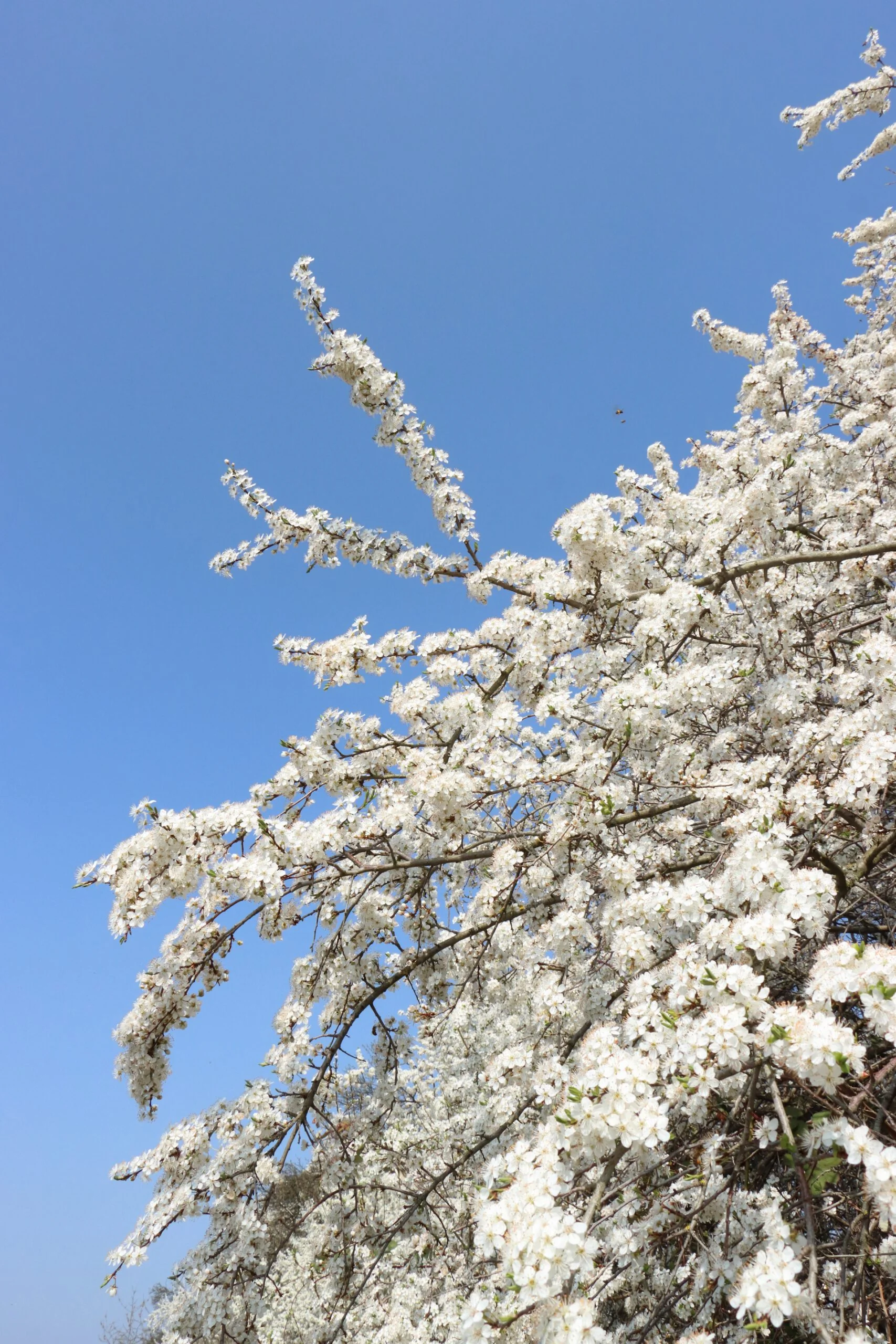
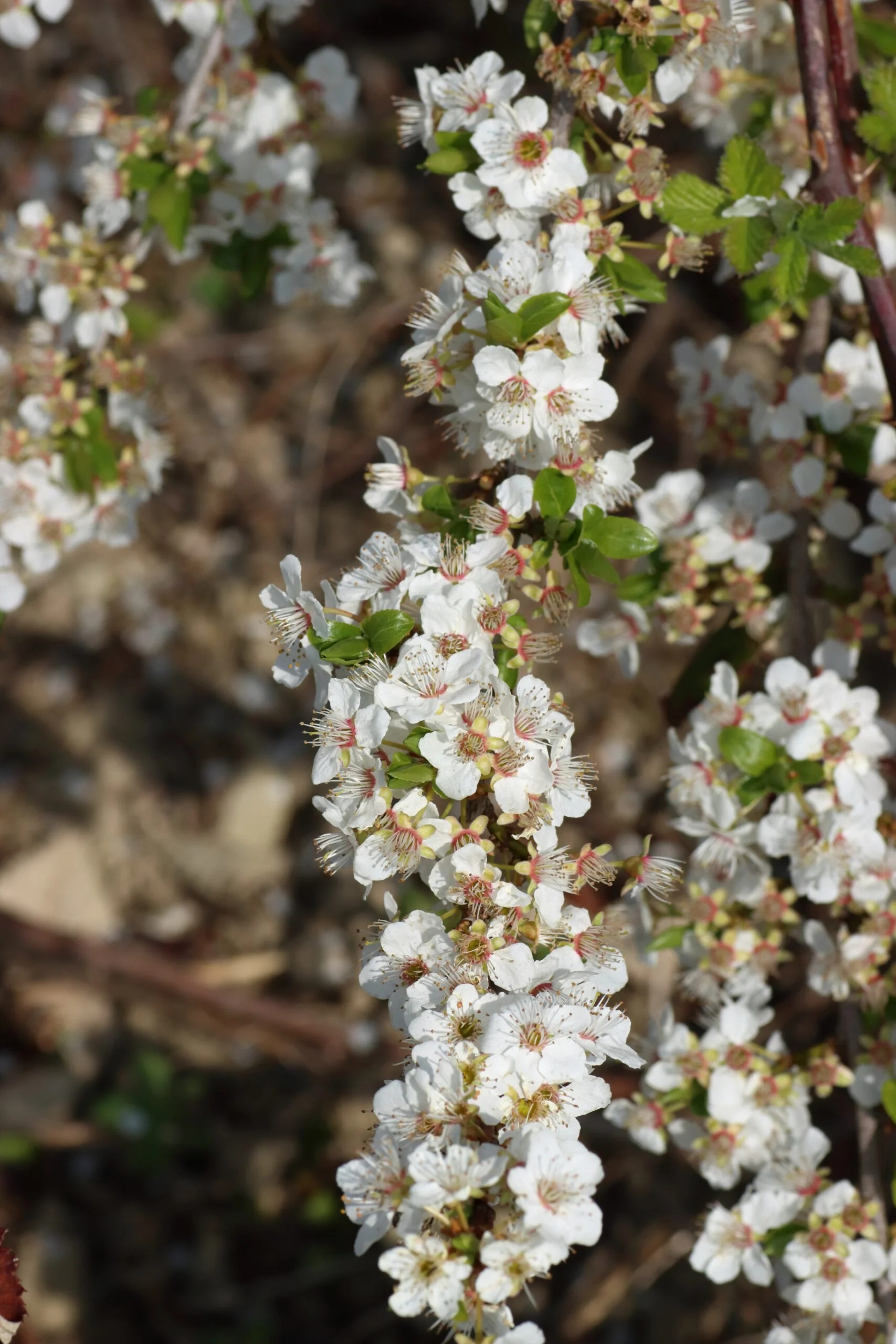

~ The branches are densely covered with flowers ~
Occurrence and distribution: The cherry plum, also known as the wild mirabelle, originates from the Balkans and Anatolia to Central Asia. It is frequently found in Germany as an ornamental plant, more rarely in the wild. It is preferred as a shrub along roadsides and in bushes. In natural hedges it serves as an early flowering plant. The flowers develop very early in the year. It is also partly planted as a cultivar in an orchard. The plant needs a calcareous loam or loess soil with plenty of sun. It is hardy down to -34°C. The plant was imported to Europe as a fruit tree as early as the 16th century.
Plant description
Growth habit: The cherry plum frequently grows as a shrub or small tree and reaches a height of between 5 and 8 metres. A large number of long branches form from the central trunk. These are initially ascending and then descend with increasing age. In some cases a multi-stemmed crown can develop.
Leaves: The leaves have an obovate structure and are dark green in colour. They taper to a point at the end. They have an elongated stem. The leaves reach a length of up to 8 cm. To protect themselves from predators, the leaves contain prussic acid. This makes them poisonous to most animals. The leaves are formed at the same time as the flower. They have a shiny surface and matt underside. The edges of the leaves are slightly serrated. It is a deciduous plant that sheds its leaves in autumn.
Flowers: The flowers are in larger groups on short, thin branches. They have an elongated, green-reddish stem. The sepals are light green in colour and sit below the petals. The flowers are between 2 and 3 cm in diameter. Five petals have an elongated oval shape and are whitish in colour. They sit in a radial shape around the centre of the flower. A greenish-yellow stigma and a multitude (between 20 to 25) of yellow to orange stamens form in this. The base of the flower is also greenish-yellow.
Fruits: After the flowering period, round stone fruits form. They have a diameter of between 2 and 3 cm. The fruits are initially green in colour and ripen to a dark yellow to dark red, depending on the subspecies. Ripening can sometimes already take place in June / July. The fruits contain a single large seed. The flesh is yellow in colour und the skin of the fruits is partly very sour.
Special features of the plant
Bark: The bark of the trunk and branches is dark brown to grey and slightly cracked. The young twigs in spring have a greenish colour. No cork warts can form on the branches. The wood of the cherry plum is hard and very brittle. The colouring ranges from pink to brown.
Flowering period: The flowers have a strong, pleasant fragrance. The flowering time is from (rarely February) March to April. It often flowers earlier than its relative blackthorn.
Leaves as caterpillar food: The leaves of the shrub serve as food for four different moth species. These are Calliteara pudibunda, Euproctis chrysorrhoea, Orgyia antiqua and Thecla betulae.
Pollination by bees and other insects: Due to its early flowering in the year, the cherry plum is one of the important bee plants. It produces plenty of nectar and pollen. Already very early in the year, the “horned mason bee” can be observed on it. Other pollinators include the honey bee and various sand bees.
Use in the kitchen
Use in the kitchen: The cherry plum is rarely used in the kitchen. It can be made into a slightly sour jam -> if you mix the fruit with “real” plums you can easily avert this effect. It is mainly the skin of the fruit that contributes to the sourness. However, they still have a high content of vitamin A and C. When the fruits are almost overripe, they become slightly sweet. Some of the chopped fruit is also used to make wild plum liqueur. The fruits contain vitamins, minerals, some trace elements, fruit acids and fructose. They are therefore a healthy wild fruit.
Caution when processing: The fruit seeds, blossoms as well as leaves should not be used in the kitchen as they contain hydrocyanic acid (hydrogen cyanide).
Interesting facts about the plant
Interesting facts about the plant: The roots and stems are mainly used to obtain grafting rootstocks, as they are considered particularly robust. The red-leaved varieties are called “blood plums”. However, they are to be regarded as ornamental plants, as the fruits are not suitable for processing as wild fruit. The flowers of the blood plum are reminiscent of the flowers of the Japanese cherry. The leaves are dark red to slightly purple. Like the cherry plums, the trees can reach a height of up to 8 metres.
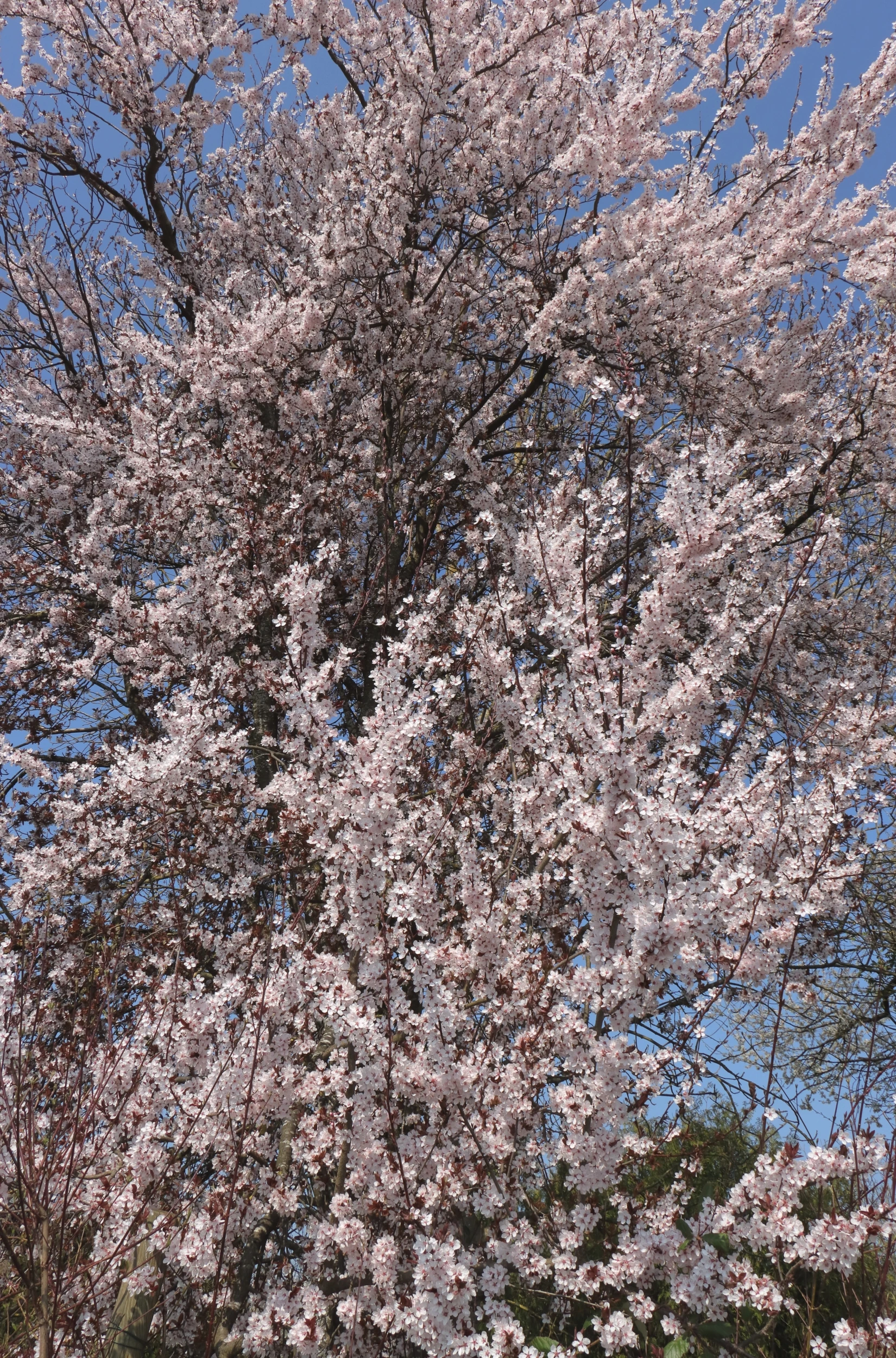

Name Origin & Folk Names
Origin of name: Origin of name: The German name “Kirschpflaume” (cherry plum) is derived from the shape of the fruits. These are similar to cherries due to their rounded appearance. As the dark red varieties are also very reminiscent of the colour of the sweet cherry, this name has become established for the plant. It is called “wild mirabelle” because the plant is the original form of today’s plums and mirabelles. The mirabelle has developed from crossbreeding. Botanically the genus name “Prunus” is given to all plums, cherries, peaches and almonds, as well as similar plants that originate from this genus. The word is derived from the Latin “prunus” – meaning “plum”. This in turn can be derived from the Greek προῦμνον (proumnon) or προῦμνος (proumnos). The botanical species name “cerasifera” can be translated as “cherry plum”.
Folk names: The cherry plum is known by various folk names in some german regions. These include ” Türkenkirsche, Kringelbaum, Kriachlbaum” (Turkish cherry, curly tree). The name ” Türkenkirsche” (turkish cherry) is derived from the plant’s origin (Anatolia, nowadays Turkey). In the Austrian vernacular, the plant is known as ” Kringelbaum” (curly tree).
Endangerment of the plant
Red List status: The cherry plum is considered to be endangered on the German Red List. It is also endangered in the individual Red Lists of the federal states.
Distribution-codes: A, AV, M1, M2, F, K